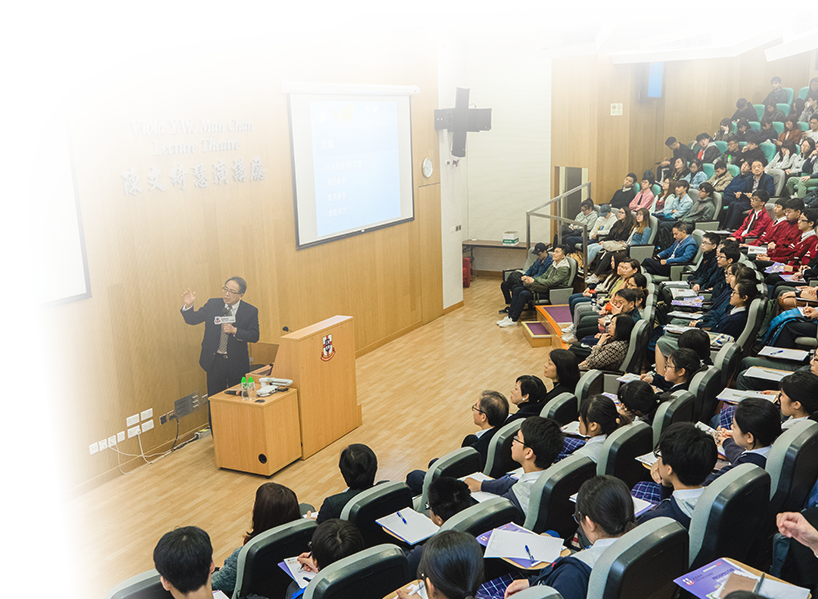

-
Bachelor’s Degree Programmes
-
Sub Degree ProgrammesDiploma ProgrammeCertificate Programme
-
Mainland Admission

 Administration Units
Administration Units
 News & EventsUser Guides and Best Practices of Using Generative AI and ChatGPT to Enhance Teaching and Learning
News & EventsUser Guides and Best Practices of Using Generative AI and ChatGPT to Enhance Teaching and LearningGenerative AI and ChatGPT
TWC ChatGPT Portal
*[Link] (for TWC staff and students only)User Guides and Best Practices
For students: “How to Optimise Your Use of ChatGPT to Enhance Learning”
-
AVOID requesting ChatGPT to create an assignment for you to present as your own work BECAUSE it does not include any learning.
-
ALWAYS use ChatGPT to enrich your learning experience and to enhance your own learning. The rationale for why talking with ChatGPT can promote learning includes motivation, engagement, and active learning. Motivation drives student engagement in active learning. Student-centered learning approaches leverage this engagement, empowering students to take an active role in the learning process. The interplay of these elements creates a dynamic, learner-focused environment that can enhance academic outcomes. Students engage in active learning by actively pursuing knowledge and making connections with their past experiences, rather than simply sitting and passively listening to the teacher.
-
CONSIDER ChatGPT as one of several information sources but avoid relying completely on it. ALWAYS cross-reference to textbooks and other sources to ensure accuracy and information integrity.
A number of ways to use ChatGPT to enhance your learning:
-
Inquiry-Based Learning and Critical Thinking Skills: Inquiry-based learning encourages students to explore, investigate, and discover knowledge through their own questions and curiosity. It shifts the focus from passive information absorption to active problem-solving, empowering students to take an investigative role in the learning process and develop critical thinking skills.
How: Ask ChatGPT about any new concept or phenomenon that you are learning or seeing. Do not limit the scope of your inquiries. Ask whatever you want, prompted by your curiosity about the new concept. Reflect on the responses ChatGPT supplied to generate further questions for your understanding. Create your own learning process by asking as many questions as you like, whenever you want. You should not be afraid to ask "stupid" questions because ChatGPT will not judge you for it. -
Personalised Learning: Learning through talking with ChatGPT personalised the learning process. It provides tailored instruction and learning content to meet the unique needs, interests, and abilities of each individual student. It aims to optimize the learning experience by adapting to the student's preferred learning style and pace.
How: Ask ChatGPT for an overview of a new concept, for alternative ways of explaining a concept, for clarifying any terminologies that you are uncertain about or do not understand, for distinguishing a concept from other similar concepts you have learnt, or for providing examples that illustrate a concept. ChatGPT offers immediate and tailored responses that cater to your specific learning needs and pace. -
Learning by Examples: Students learn by drawing conclusions and patterns from the provided examples, instead of relying solely on abstract theories and instructions.
How: Ask ChatGPT to provide numerous examples to illustrate a concept. Engage in reflection upon examples to enhance understanding of a concept and its practical applications. -
Assessment for Learning: Assessment for learning uses ongoing, formative assessment to provide students with timely feedback to improve their learning. It focuses on using assessment as a tool to guide instruction, identify learning gaps, and enable students to take an active role in their own progress, rather than solely evaluating final outcomes.
How: Ask ChatGPT to generate an assessment aimed at evaluating your understanding of a particular concept. Prior to anything else, it is important that you try to resolve the problem or demonstrate your understanding of the concept. Next, ask ChatGPT to assess your work for comments. Obtain relevant and timely feedback to enhance your understanding and refine your work for improved task performance. Iterate and persist in this evaluation and feedback process to improve knowledge acquisition.
“Prompts” Examples
Blooms Taxonomy and Action Verbs: Follow the Blooms Taxonomy of a hierarchical structure of understanding and utilize the action verbs as prompts to ask ChatGPT at different stages of your learning.
-
Remember: Recall facts and basic concepts, e.g., “define,” “list,” “state”
-
Understand: Explain ideas or concepts, e.g., “classify,” “describe,” “discuss,” “explain”
-
Apply: Use information in new situations, e.g., “implement,” “solve,” “demonstrate”
-
Analyze: Draw connections among ideas, e.g., “differentiate,” “organize,” “compare,” “contrast,”
-
Evaluate: Justify a stand or decision, e.g., “argue,” “critique,” “judge”
Prepared by the Centre for Innovative Teaching and Learning (CITL)
July 2024
Technology-Enhanced Learning (TEL)+ The Centre for Innovative Teaching and Learning (CITL)- About CITL
- Advisory Committee & Executive Committee
- International Conferences, Symposiums, Seminars
- Academic Staff Professional Development Framework
- Technology-Enhanced Learning (TEL)
- College Teaching Grant (CTG)
- Teaching Excellence Award (TEA)
- Teaching and Learning Resources
- Learning and Teaching Seminars (LTS)
- News and Events
- I-Cap Student Research Project (I-Cap)
- Photo Gallery
-















